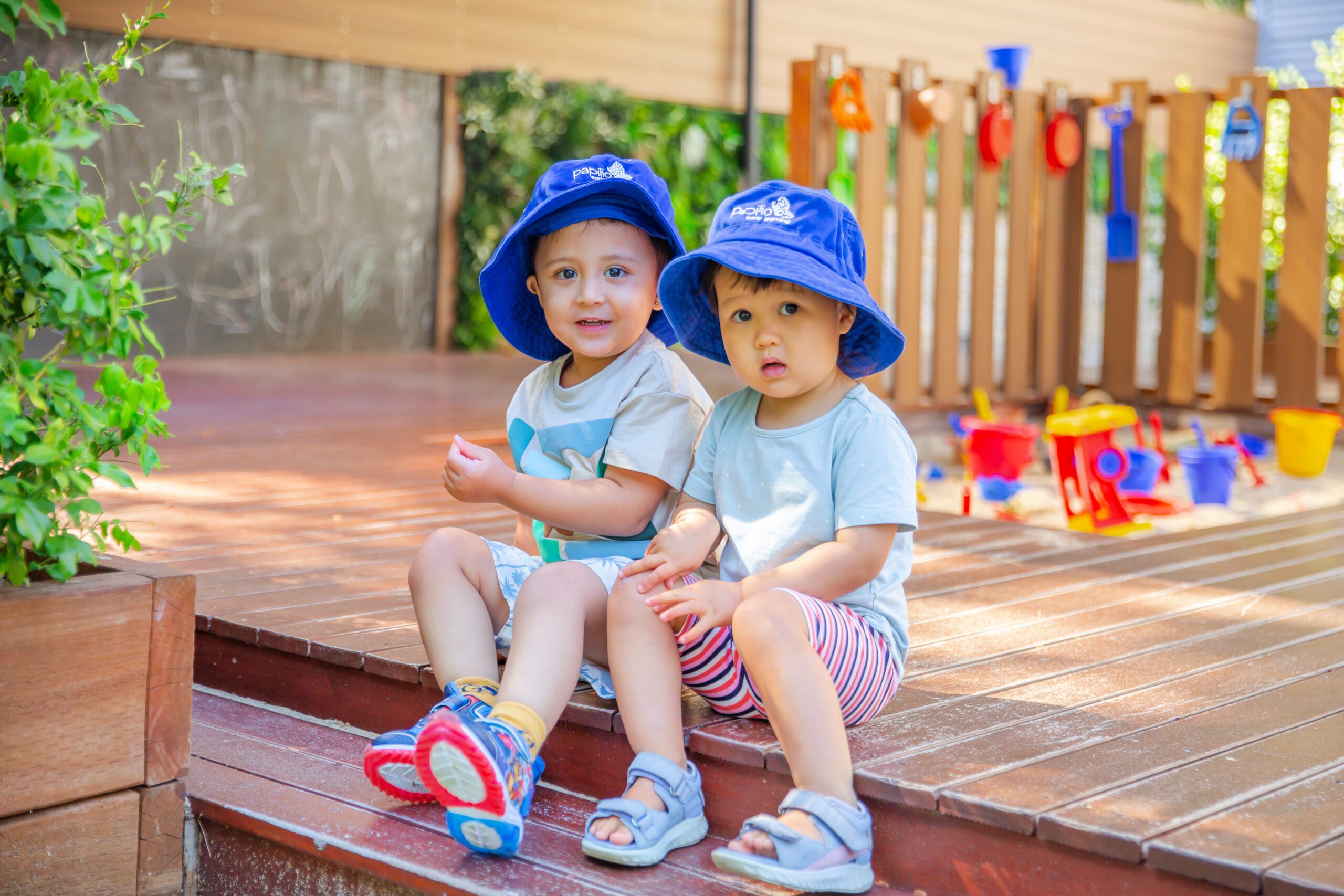
Sleep might be one of the trickiest parts of parenting - but it can also be one of the most rewarding. Those peaceful moments before your little one drifts off, the gentle rhythm of a bedtime story, the soft cuddle of a well-loved comforter… these are the little things that help children feel safe and supported.
At Papilio Early Learning, we know just how vital sleep is for growing minds and bodies. Whether your child is six weeks or five years old, we’re here to help you build safe, comforting sleep routines at home - and give you peace of mind about how sleep is managed at our centres.
Setting Up a Safe and Supportive Sleep Space at Home
Every child is unique, but a few simple strategies can make a world of difference when it comes to sleep:
Babies (0–12 months):
-
Always place baby on their back to sleep. Use a firm mattress with a fitted sheet in a cot or bassinet - no pillows, quilts, bumpers or toys.
-
Keep things cool and simple. The ideal room temperature is 20–22°C. Dress your baby in light layers or a TOG-rated sleep bag to match the season.
-
Feet to foot position. Place your baby’s feet at the end of the cot to reduce the risk of wriggling under bedding.
Toddlers (1–3 years):
-
Involve them in the transition. Moving to a toddler bed? Let them help choose their sheets or bedtime toy (as long as it’s safe).
-
Stick to a soothing routine. Bath, book, cuddle - these small rituals help toddlers wind down and feel secure.
-
Use a warm nightlight if needed. It can ease fears and help with transitions between sleep stages.
Preschoolers (3–5 years):
-
Offer choices. Which pyjamas? What book? These simple decisions help preschoolers feel in control at bedtime.
-
Stay consistent. A regular bedtime - even on weekends - supports mood, memory, and overall wellbeing.
-
Wind down gently. Avoid screens and high-energy play at least an hour before lights out.
Have a baby who wakes early and a kindy kid who resists bedtime? You’re not alone. Try syncing part of the wind-down routine - like a shared story or lullaby - to help both children settle calmly.
How Papilio Centres Support Safe, Restful Sleep
At Papilio, sleep isn’t an afterthought - it’s built into our daily rhythm, tailored to each child’s age, routine, and needs.
Here’s how we help your child rest safely and peacefully:
-
Safe sleep training for all educators, aligned with current national guidelines
-
Peaceful nursery sleep rooms with individual cots and five-minute sleep checks for babies
-
Toddlers and preschoolers rest on low beds or sleep mats in calm, dimly lit environments
-
We follow your child’s routine. Families share what works at home - comforters, nap cues, or calming rituals - and we continue that rhythm at the centre
-
Quiet activities for non-sleepers. Some children don’t nap - and that’s okay! We offer puzzles, books, and soft play to help them relax and recharge
If a child has trouble settling, our educators respond with patience, comfort, and care. We may gently pat, sit beside them, offer their comforter, or quietly talk through their feelings to help them feel safe. We work closely with families to mirror the strategies used at home wherever possible.
Sleep is just one part of our broader focus on wellbeing and safety. You can learn more about how we protect and care for children each day by visiting Our Safety Commitment.
Every child is different - and that’s perfectly okay. What matters most is feeling safe, supported, and rested.
When Sleep Patterns Change
Sleep isn't static - it's a moving target, especially during big transitions. Starting child care, learning new routines, dropping naps, or even a change in the weather can cause temporary disruptions.
That’s why our team works in partnership with families through every stage. If your child starts waking earlier or resists naps after starting care, we’ll adjust gently and help them re-settle over time. It’s all part of helping children feel safe, secure and supported.
Common Sleep Questions from Parents
Sleep Support, Every Step of the Way
Sleep routines can be one of the toughest parts of early parenting - and you don’t have to figure it out alone. Our educators are here to work with you, offering guidance and consistency between home and care to help your child rest well and feel secure.
Discover a Centre That Feels Like Home
With beautifully designed centres in suburbs like Box Hill, Cranbourne East, Reedy Creek and Schofields, Papilio offers families a warm, supportive place where safety and wellbeing come first - from playtime to nap time.
👉 Find your nearest Papilio Early Learning centre and book a tour today.